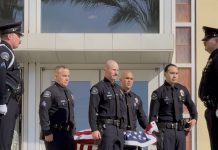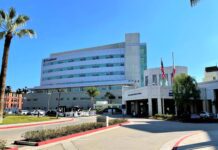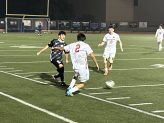Editor’s Note: The author also sent the following to the Board of Education
Letter to the Editor:
Thank you to the one member who responded to my previous open letter to the Board. As promised, I hope to continue bringing attention to the many places where BUSD can do better in its commitment to students.
After the fourth physical altercation at my daughter’s middle school this semester, I read yet another email ending with the same words that I have written many times as a school administrator – “if you see something, say something.”
And, while I appreciated Dolores Huerta Principal Kenny Knoop’s detailed letter to parents concerning violence on campus – as I know Mr. Knoop to be a vested leader and good man – I see him and other excellent middle school administrators struggling due to District overreach.
In response to the inquiry above, what I see is BUSD’s secondary site leaders trying to enforce a well-intended but highly problematic District “hate speech” policy that undermines their efforts to keep their campuses safe.
Specifically, BUSD began the 2022-23 school year with District policy language that didn’t allow schools to suspend until the fourth incident of hate speech. As students tell parents, most (if not all) of these recent physical altercations resulted from an incident of hate speech.
When this policy was first previewed by principals last spring and summer, they cautioned it would be problematic. When it was then presented to secondary teachers during inservice days in August, the policy went over like a lead balloon with staff who knew it would create more problems than it solved. It has.
Though the policy was later modified at the urging of some of the same site leaders, it remains inadequate, and it illustrates the disconnect between the District’s broad-level policy and day-to-day school site operations.
The District’s consultant for Diversity, Equity and Inclusion (DEI) presented this policy alongside Assistant Superintendent Dr. John Paramo without appreciation for the implications for the sites, their efforts related to safety and behavior expectations under their Positive Behavior Interventions and Supports (PBIS) framework for student discipline. BUSD’s important DEI work essentially divested school leaders of discretion to respond to hate speech and presented barriers to student support and discipline efforts.
Schools are microcosms of the larger world and often mirror its problems. Far too much ugly exists today and there will be times where this ugliness seeps into the hallways of school buildings. Schools cannot enforce a policy permitting multiple instances of hate speech before there are tangible and visible consequences which show adequate support for the victims of that speech or violence. Such a policy handcuffs school leaders’ ability to keep all students safe — the victim, members of the oppressed group, witnesses, and the aggressor.
Site leaders must be trusted to balance restorative practices – in education these are intended to build community and maintain healthy relationships while reteaching behavior – with appropriate disciplinary consequences that support the victims and allow the conflict to de-escalate. In fact, PBIS experts teach school leaders that restorative practices are to work in tandem with appropriate consequences, not replace them entirely. This is a basic premise of the training and implementation of the framework.
Restorative practices include affective statements, community-building circles, small impromptu conferencing, and setting agreements or norms, which are wonderful practices that can and do have a positive and powerful impact on school culture. But they take time to implement, and they do not work in a vacuum without progressive consequences. School leaders and teachers need to be trusted to run their schools and classrooms, without being unreasonably limited by well-meaning but impractical District policy.
At the last Board of Education meeting, Burbank Teacher Association President Diana Abasta stated that Board of Education members and District administrators needed to do more to physically protect students and staff. She called for a return to progressive discipline support at the school level. She is right.
Though progressive discipline is also complicated and multifaceted. There is little evidence that suspension alone curbs behavior or is a cure-all solution. However, victims need more than words of reassurance to feel supported after trauma. While aggressors should certainly do the online education classes the BUSD currently assigns for the first offense, that should not be the only action taken after use of a racial slur (even the first occasion). The recurrent displays of physical violence at DHMS arising from hate speech is plain evidence of that. The loose policy does not permit the administrators to adequately address these moments, increasing the likelihood that the situations will escalate.
To complicate the discussion further, the State of California’s current dashboard system (a report card for schools) grades schools and districts on their suspension rates, thus creating huge pressure to avoid suspension as high rates hurt school performance data. The dashboard suspension tracking is a State-level example of where intention and impact are misaligned. We need a balanced and sensible approach. Site leaders are the best drivers for this needed change; not consultants, not School Board members and not a Superintendent who never worked at a school site.
When I reflect on my time as an assistant principal of discipline in 2010-11, I am embarrassed at how often I suspended students under the policies that were then in place. But I am proud of the restorative and reflective conversations I had with students and families following such incidents to capture the teachable moments. There is a teachable moment for BUSD here now. Current policies aren’t working.
BUSD must not tolerate an increase in physical violence on campus, particularly when captured on video and then shared widely among students and/or in the cases where these incidents started with racially charged hate speech as was often the case at my daughter’s school. Among District-level leadership, none appear to have their own children enrolled in BUSD schools. Are their kids in La Canada or Santa Monica-Malibu schools having similar issues and as parents are they satisfied with communications home that despite the violence, and the apparent lack of any consequence for the perpetrators, their kids are nonetheless safe?
The District has passed resolution after resolution against racism and often speaks to the importance of its DEI work. I believe it is committed to the work, having served on multiple committees focused on the District’s efforts. But, where a policy designed theoretically to train away from hate speech is leading to an increase in campus violence, the approach needs a reset.
High-optic, low-impact and ineffective District policy or public resolutions aren’t the answer as they don’t threaten racism or other injustices. Let site leadership teams do the work with District support and back them through inevitable setbacks.
The important DEI work cannot be implemented without adequate, functional strategies. Removing literary works that contain the N-word from core curriculum (a zero-tolerance policy for books) while maintaining policies that in effect tolerate hate speech in school hallways (the first, second or even the third time) is inconsistent at best and is inciting and condoning violence on campuses at worst.
Fundamentally, students and staff cannot thrive unless they feel safe. BUSD leadership needs to reconnect with all stakeholders – students, teachers, site leaders, community members as well as stakeholders in other school communities in the spirit of solving complex issues of race, diversity, equity, inclusion, belonging and perhaps most importantly and intertwined, campus safety.
Tom Crowther
Former BUSD employee and current parent


















Burbank teachers used to be able to use enduring texts- both fiction and non- written by authors of various backgrounds to address racist language and behavior in the classroom. Through these stories and accounts, students could naturally develop empathy and understanding about the meaning of these words and actions in a much more effective way than being repeatedly told no. This decision was made without any real attempt at addressing how the texts could be used better in the classroom.
This reality was highlighted when a number of students spoke at a Board meeting about the effect that these texts had on them- including immigrant students who may only hear certain words in mainstream media with no context.
Burbank has removed a well-proven avenue for students of all backgrounds to better relate to and understand the implications and history of racist violence and language. An administrator lecturing a large group of students all at once can’t have the same effect and a restorative justice talk only occurs after an offense has occurred.
-Justin Riner
Comments are closed.